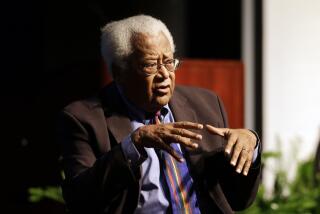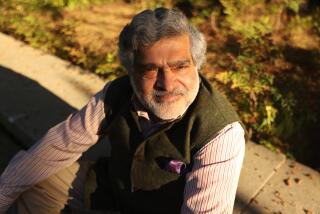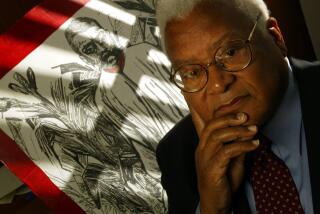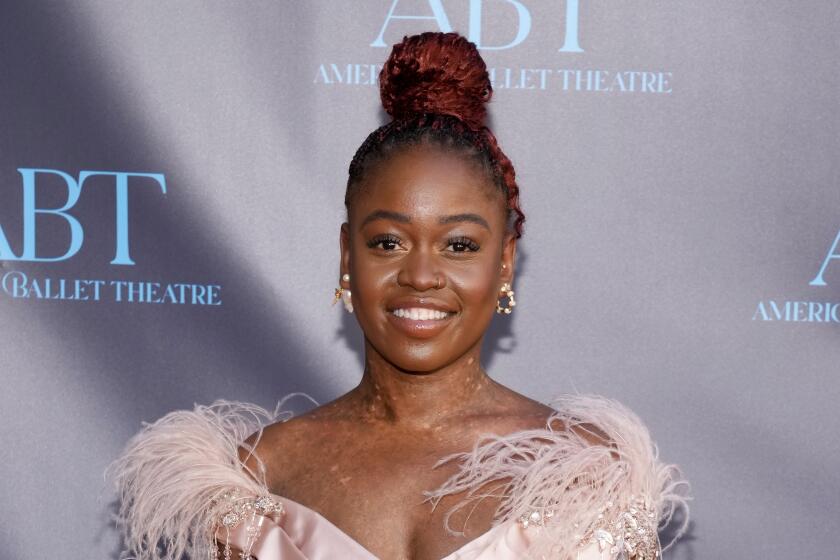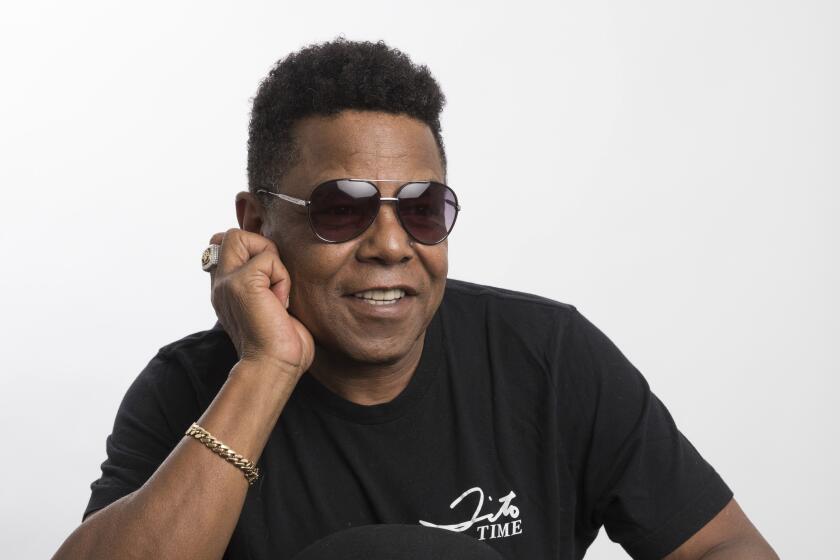Franklin McCain dies at 73; one of the ‘Greensboro Four’
When teenager Franklin McCain decided to make a stand against segregation at the F.W. Woolworth’s lunch counter in Greensboro, N.C., in 1960, two thoughts weighed on him.
“If I were lucky, I would go to jail for a long, long time. If I were not quite so lucky,” he recalled to a reporter five decades later, “I would come back to my campus … in a pine box.”
The black teenager and the three close friends who joined him that day were not arrested — at least not that time. Nor did white Greensboro react violently to their “sit-in,” although threats poured in.
But that day — Feb. 1, 1960 — proved crucial. “With no prompting from any of the existing civil rights organizations or black adult leadership,” Pulitzer Prize-winning historian David J. Garrow wrote, “a new stage in the black freedom struggle had been launched.”
The actions of the “Greensboro Four,” as McCain and his friends were later called, were soon emulated by thousands of youthful activists across the South, most notably in Nashville, where a disciplined corps of students turned the sit-in into a model of nonviolent protest for the 1960s and beyond.
“It did become a signal date in the development of the sit-in campaign. No doubt about that,” the Rev. James Lawson, the architect of the Nashville campaign who later headed Holman United Methodist Church in Los Angeles, said of the Greensboro protest. “It is one of the historic dates in the struggle.”
McCain, who continued to work for social justice during a long career with a Charlotte, N.C., chemical company, died Thursday at a Greensboro hospital of complications of pneumonia, said his son, Wendell McCain. He was 73.
The civil rights trailblazer did not see himself as a radical out to change the world, but he could not ignore the difficult realities of life for African Americans.
Born on Jan. 3, 1941, in Union County, N.C., he grew up in Washington, D.C., where his businessman father and homemaker mother provided a comfortable home. In 1955, when he was 14, he was horrified by the murder of Emmett Till, also 14, who had been mutilated, shot and dumped in Mississippi’s Tallahatchie River after being accused of flirting with a white woman.
“Emmett Till never had a chance. My young mind would never let me accept that or forget it,” McCain told the Atlanta Journal-Constitution in 2005.
In the fall of 1959, he enrolled at North Carolina A&T State University in Greensboro, where he studied chemistry and biology. The three students who became his best friends were Ezell Blair Jr. (now Jibreel Khazan), David Richmond and Joseph McNeil. They all lived in the same dormitory and studied together every night.
The study sessions turned into heavy discussions, often focusing on the friends’ disillusionment with their parents, who told them that if they were polite, worked hard and earned good grades, the American dream would be theirs. “The Big Lie,” McCain called it.
Although victories had been won, they were years in the past: Brown vs. Board of Education, the U.S. Supreme Court ruling against separate-but-equal public schools, had been issued in 1954, and the Montgomery bus boycott that brought Martin Luther King Jr. to prominence ended in 1956. But in 1960, Jim Crow still ruled, with “whites only” signs on public facilities across the South.
“The more we talked, the more we felt we were living out the lie,” McCain told the Charlotte Observer in 2010. “The only thing we’d done is dissected a system, criticized it and our parents … who tried to nurture us. We didn’t like that feeling.”
Instead of being “armchair activists,” they decided to challenge the system.
The sit-in was not an original idea; black protesters in other states had tried the tactic sporadically in the late 1950s, to little effect. There was no reason to believe that the Greensboro Four would make a difference.
Nonetheless, on the afternoon of Feb. 1, 1960, McCain threw a coat over his ROTC uniform and joined Blair, McNeil and Richmond for the one-mile walk from campus to downtown Greensboro. They chose Woolworth’s as their target because of its double standard: Its lunch counters in the North were integrated, but in the South they served only whites. “You could go in and buy your school supplies, but you couldn’t sit at the lousy counter,” McCain told the Washington Post in 1995.
The four college freshmen made a few purchases — McCain bought toothpaste and a composition book — and then approached the lunch counter, armed with the receipts that proved their money had been acceptable elsewhere in the store.
They sat down and ordered coffee, but a white waitress told them to leave. A black woman working behind the counter called them troublemakers and pointed them toward the counter where black customers were allowed to stand, but the young men did not budge. They left at closing time without being served.
At one point a white policeman had come in, slapping his nightstick in his hand.
Another chilling moment came when an elderly white woman got up from her seat and placed one hand on McCain’s shoulder and the other on McNeil’s. McCain steeled himself for a barrage of racial epithets, or worse. Instead, she told them she was proud of them and that she regretted they hadn’t taken their stand sooner.
The next day they returned with nearly two dozen other students. The numbers grew through the week, with 1,000 students marching through downtown Greensboro by the fifth day.
A few weeks later, the Nashville students leaped into action, beating their Greensboro comrades to victory when their city’s lunch counters were integrated in May. By then sit-ins had spread to more than 50 cities across the old Confederacy.
In Greensboro, success came on July 25, 1960, when Woolworth’s served four of its black employees at the lunch counter.
McCain graduated from North Carolina A&T in 1964 and for 40 years worked as a chemist and sales representative for the Celanese Corp. in Charlotte. In 1965 he married a fellow sit-in participant, the former Bettye Davis. She died in 2013.
Besides son Wendell, McCain is survived by sons Franklin Jr. and Bert, and seven grandchildren.
He traveled the country giving talks about the “the power in one and the few” to change the course of history.
“Never ask for permission to start a revolution,” he told college students in Ohio a few years ago. “If there is something you want or need to do … just do it.”
More to Read
Start your day right
Sign up for Essential California for the L.A. Times biggest news, features and recommendations in your inbox six days a week.
You may occasionally receive promotional content from the Los Angeles Times.
